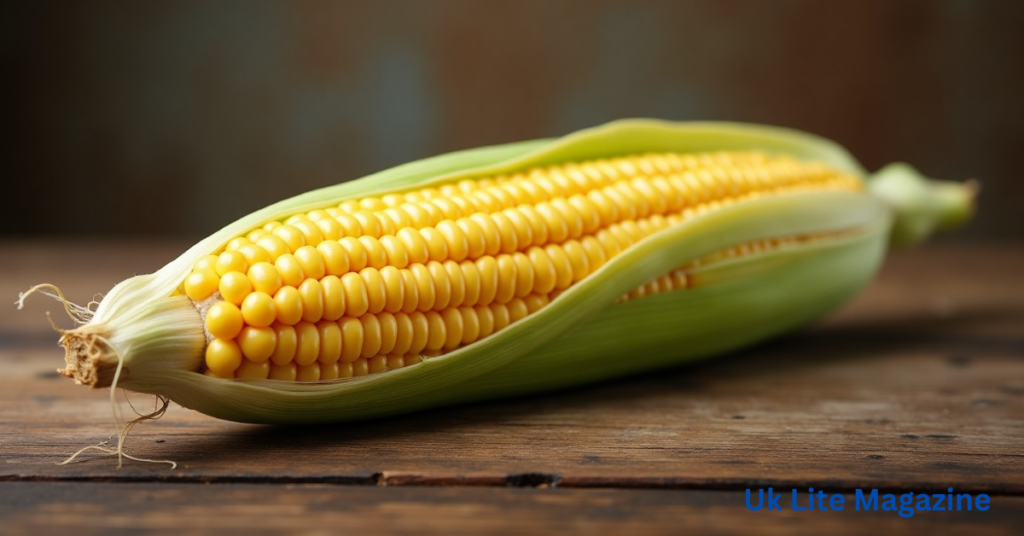Corn is one of the most important crops grown worldwide, providing food, animal feed, and industrial products. Among the different varieties, FPO Corn has gained attention due to its unique cultivation and benefits. But what exactly is FPO corn? This article explores the meaning, benefits, uses, and growing tips for FPO corn.
What Is FPO Corn?
FPO stands for Farmer Producer Organization, a collective of farmers who work together to produce and market agricultural products, including corn. FPO corn refers to corn cultivated and distributed by these farmer organizations rather than individual producers. The goal of FPOs is to empower farmers, improve productivity, and ensure better market access.
FPOs help small and marginal farmers by providing them with resources like quality seeds, fertilizers, technical knowledge, and direct market linkage, reducing the role of middlemen.
Benefits of FPO Corn
FPO corn offers several advantages for farmers, consumers, and the agricultural sector. Here are some key benefits:
1. Better Market Access for Farmers
Through FPOs, farmers can sell their corn at fair prices without relying on intermediaries. This ensures better profits and financial security for small-scale farmers.
2. Quality Assurance
Since FPOs work collectively, they focus on high-quality seed selection, pest management, and sustainable farming techniques. This leads to better-quality corn production.
3. Cost Reduction
Farmers within an FPO can buy agricultural inputs like seeds, fertilizers, and machinery in bulk at lower prices. This significantly reduces production costs.
4. Sustainable Farming Practices
Most FPOs encourage sustainable and eco-friendly farming techniques, such as crop rotation, organic fertilization, and water conservation methods, which help maintain soil fertility.
5. Increased Bargaining Power
A collective of farmers has stronger bargaining power compared to individual growers. This helps in negotiating better prices and policies with buyers, suppliers, and the government.
6. Financial and Technical Support
FPOs often receive support from government schemes, NGOs, and agricultural experts. Farmers get access to loans, insurance, and training programs, enhancing their productivity.
Uses of FPO Corn
FPO corn has diverse applications in different industries. Some of the major uses include:
1. Food Industry
- Used in producing corn flour, cornmeal, and corn oil.
- Found in cereals, snacks, and processed foods.
- Used in making corn syrup, a sweetener in beverages and candies.
2. Animal Feed
- A major ingredient in livestock feed, providing essential nutrients for cattle, poultry, and pigs.
- Used in pet food formulations.
3. Biofuel Production
- Corn is a primary source for ethanol production, an alternative fuel used in vehicles.
4. Industrial and Pharmaceutical Use
- Used in making biodegradable plastics, adhesives, and textiles.
- Corn starch is an important ingredient in medicines and cosmetic products.
Growing Tips for FPO Corn
If you are part of an FPO or an individual farmer interested in cultivating corn, follow these essential growing tips:
1. Choose the Right Variety
Select a corn variety that suits your soil type, climate, and market demand. Hybrid and genetically improved seeds can enhance yield and disease resistance.
2. Prepare the Soil Properly
Corn grows best in well-drained, loamy soil with a pH between 5.8 and 7.0. Ensure the soil is rich in organic matter and nutrients for better growth.
3. Optimal Planting Time
Plant corn at the beginning of the rainy season or during warm temperatures. Avoid planting during extreme heat or cold conditions.
4. Use Proper Spacing and Irrigation
- Maintain a spacing of 20-30 cm between plants and 60-75 cm between rows for better growth.
- Corn requires moderate watering; ensure deep irrigation during dry periods.
5. Pest and Disease Management
Monitor the crop regularly for pests like corn borers and armyworms. Use organic or chemical pest control methods as needed.
6. Apply Fertilizers and Nutrients
Use a balanced combination of nitrogen, phosphorus, and potassium fertilizers. Organic compost or manure can improve soil fertility.
7. Harvest at the Right Time
Harvest the corn when kernels are fully developed and dry. For silage or animal feed, harvest while the plant is still green.
Conclusion
FPO corn is revolutionizing the agricultural sector by empowering farmers, ensuring quality production, and providing better market opportunities. Its uses range from food and animal feed to biofuel and industrial applications. With proper cultivation techniques, FPO corn farming can be a profitable and sustainable choice for farmers.
Frequently Asked Questions (FAQs)
1. How is FPO corn different from regular corn?
FPO corn is produced by farmer collectives (FPOs) that focus on quality, sustainability, and better market access, whereas regular corn is grown by individual farmers.
2. Is FPO corn organic?
Not necessarily. Some FPOs practice organic farming, while others use conventional methods. It depends on the organization’s approach and policies.
3. Where can I buy FPO corn?
You can purchase FPO corn directly from farmer organizations, cooperatives, agricultural markets, or online platforms specializing in farm produce.
4. Can small farmers benefit from FPO corn farming?
Yes, FPO corn helps small farmers by providing financial support, technical knowledge, and better market access, leading to improved earnings.
5. What are the challenges in growing FPO corn?
Challenges include pest attacks, climate changes, fluctuating market prices, and the need for continuous training in modern farming techniques.
By understanding FPO corn and implementing the best farming practices, farmers can enhance productivity, reduce costs, and contribute to a sustainable agricultural future.

